Are you a Quiet Speculation member?
If not, now is a perfect time to join up! Our powerful tools, breaking-news analysis, and exclusive Discord channel will make sure you stay up to date and ahead of the curve.
And so, the devastation of Modern continues. At least, if you listen to most social media where companions are concerned. I remind everyone again that meaningful data on the matter is currently non-existent; all anyone has to go on are their personal observations. And then the echo chamber will come into play as those observations get passed around until that's all anyone can hear. There's little room for dissent, or even reality, in such an environment. In a time of ambiguity, this perception will thrive. With no data, there can be no pushback.
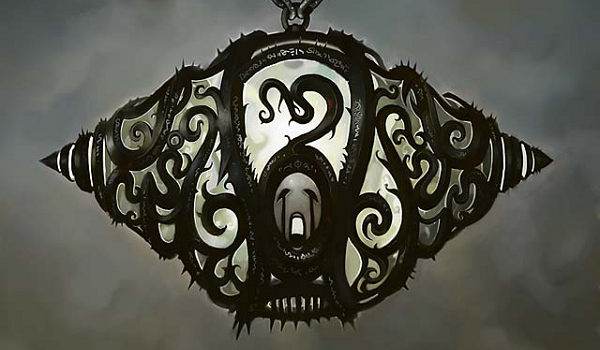
I don't know what the truth of the companions' power really is. I have my own observations, but they're no more valid than anyone else's. A definitive answer will be found once I have an actual data set. With paper Magic shut down, this means collecting the data from MTGO. The problem has been Wizards failing to upload all the results.
Eventually, I intend to use the Challenges, Preliminaries, and Super Qualifier data to build a metagame picture. I'll then contrast the new with the old to see what's changed. I just have to wait until first there's enough data for the set to be meaningful. In the meantime, I continue to struggle with my experiences not reflecting the overall narrative and being underwhelmed by Lurrus of the Dream-Den.
Power Problems
Following up on what I said last week, I'm not having the same experiences with Lurrus that I keep hearing others have. Part of that is random chance. I'm just not seeing as many companion decks as other players. I also may be seeing atypical games. This is equally true of other observers. However, I'm more inclined to believe my own observations, because when I'm working with Lurrus in more laboratory conditions I'm getting similar results.
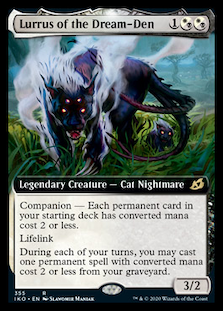 The fact that Lurrus slots into decks with small creatures is blindingly obvious. However, from there everything diverged. Some thought that Lurrus was best in Zoo style decks. Others were high on Lurrus bringing Aristocrats into Modern. I thought that Counters Company was the right move. I was wrong, and that set me on my path to doubting the Cat Nightmare because the deckbuilding opportunity costs proved unexpectedly high. This suggested to me that I couldn't slot in Lurrus anywhere, and it needed to be built around. However, that never worked out. The theorized Aristocrats-styled deck has yet to materialize, and my efforts haven't yielded much better.
The fact that Lurrus slots into decks with small creatures is blindingly obvious. However, from there everything diverged. Some thought that Lurrus was best in Zoo style decks. Others were high on Lurrus bringing Aristocrats into Modern. I thought that Counters Company was the right move. I was wrong, and that set me on my path to doubting the Cat Nightmare because the deckbuilding opportunity costs proved unexpectedly high. This suggested to me that I couldn't slot in Lurrus anywhere, and it needed to be built around. However, that never worked out. The theorized Aristocrats-styled deck has yet to materialize, and my efforts haven't yielded much better.
I'm primarily an aggro/tempo player, and focused my brewing on the Zoo end of the spectrum. I never really got anywhere. The closest I came to a good deck was this take on Death and Taxes.
Lurrus and Taxes, Test Deck
If I posted this maindeck in a vacuum, the most likely comment I'd receive is that it's severely underpowered and bad. And it is, whether compared to versions that I've tried in the past or ones found online. It lacks long-game power, the threats are anemic and cannot effectively flood the board or evade, and I'm all-in on a few avenues of disruption. What even is the point of Mishra's Bauble in this deck?
Amplification
However, when Lurrus is added into the equation, the deck makes more sense. I'm running a value engine and set up for a longer fight. However, that doesn't change the underlying problems with this deck. Rather than a mana-taxing deck with lots of anemic creatures, it's a mana-taxing deck full of anemic creatures that relies on a value-recursion engine to be effective. 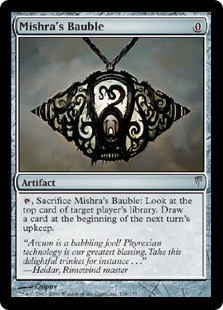 An engine, that I must add, is a single card. That I can't get back if it dies. Trying to fix that weakness actually made the deck clunkier, and ultimately wasn't worthwhile. Lurrus couldn't make a bad deck good.
An engine, that I must add, is a single card. That I can't get back if it dies. Trying to fix that weakness actually made the deck clunkier, and ultimately wasn't worthwhile. Lurrus couldn't make a bad deck good.
What I learned is that Lurrus isn't a really a build-around card. If not for companion, I doubt Lurrus card would see any Modern play. With companion, it can serve as a consistency amplifier. Companion makes it readily available in every game. Add in a bunch of other consistency boosts and suddenly the deck runs far smoother, just like normal cantrips.
However, unless the housing shell was already good, Lurrus won't do enough. Greater consistency is necessarily more powerful than less, but it will never be as strong as raw power. A deck with lots of tiny threats will always struggle against more powerful cards unless everything lines up perfectly. There's a reason that Death and Taxes has always struggled compared to the higher-powered Humans.
Adaptation
And it appears that the community is generally on my side. The most recent results as of this writing are almost entirely known good decks. There are some rogues here and there, but I didn't spot any truly new companion-centric decks. Those decks that do have companions have just adjusted accordingly. The biggest changes are Yorion decks, out of necessity; playing 80 cards will severely distort a deck, but that level of redesign isn't happening for Lurrus. It's been relatively small adjustments.
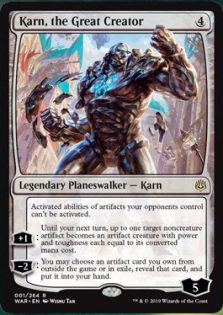 Of course, it's not even necessary to adjust at all. Looking at the raw data is showing that decks with and without companions are doing comparably well. Despite what the most hyperbolic might claim, there's no indication that companions are necessary to win. I'm seeing plenty of decks right now that look the same as they did before Ikoria. And even those decks that have twisted themselves into knots accommodating a companion are recognizable evolutions from their pre-Ikoria counterparts. Or, in a few cases, are the same deck with only a sideboard slot changed.
Of course, it's not even necessary to adjust at all. Looking at the raw data is showing that decks with and without companions are doing comparably well. Despite what the most hyperbolic might claim, there's no indication that companions are necessary to win. I'm seeing plenty of decks right now that look the same as they did before Ikoria. And even those decks that have twisted themselves into knots accommodating a companion are recognizable evolutions from their pre-Ikoria counterparts. Or, in a few cases, are the same deck with only a sideboard slot changed.
Leaving aside the eighth card argument, the actual impact that companions have on deck power is hard to determine. As my experiments have shown, they don't suddenly make a bad deck good. They also don't appear to necessarily give one deck a leg up on another. The power is more contextual, and I think that's the key.
Introducing Inefficiency
Still, even the decks that fit into my above criteria seem to be sacrificing a lot, and I haven't seen the benefit. The degree of adaptation required is twisting decks into shapes that under other circumstances would be recognized as suboptimal. Consider how Jund is incorporating Lurrus:
Lurrus Jund, Bosserman (League 5-0)
Compared to the standard model, this list is extremely inefficient, both despite and because of it being lower to the ground. If efficiency is defined as mana utilization per turn, then this deck is no less efficient than before. However, I think of efficiency as utility-based. It's not how much, but how valuable the output is that matters. Using a definition of the ratio of useful work to inputs, Lurrus Jund requires pilots to jump through more hoops to reach similar ends than previous Jund versions have.
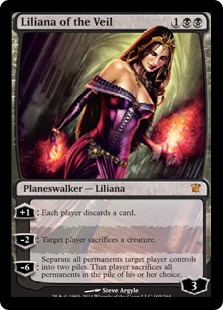 Playing Lurrus in Jund means giving up Liliana of the Veil and Bloodbraid Elf maindeck, and Tireless Tracker out of the sideboard. Liliana can kill creatures and/or deplete hands, which is not only a significant source of card advantage, both real and virtual, but also represents a disruption engine for three mana total. That's a very efficient investment-to-utility ratio. The equivalent system in Lurrus Jund is to rebuy Seal of Fire and Kroxa with Lurrus. This is a far more mana-intensive system than just running Liliana: Lurrus costs three up front, and then each turn, Jund has to pay an additional 1-2 mana. Just to create in aggregate what it had in Liliana. That's not efficient.
Playing Lurrus in Jund means giving up Liliana of the Veil and Bloodbraid Elf maindeck, and Tireless Tracker out of the sideboard. Liliana can kill creatures and/or deplete hands, which is not only a significant source of card advantage, both real and virtual, but also represents a disruption engine for three mana total. That's a very efficient investment-to-utility ratio. The equivalent system in Lurrus Jund is to rebuy Seal of Fire and Kroxa with Lurrus. This is a far more mana-intensive system than just running Liliana: Lurrus costs three up front, and then each turn, Jund has to pay an additional 1-2 mana. Just to create in aggregate what it had in Liliana. That's not efficient.
![]() In a similar vein, where previous versions relied on Bloodbraid Elf and sideboard Tireless Tracker as a card advantage boost, the plan here is to recur Mishra's Bauble with Lurrus repeatedly. To play Lurrus, the old engines had to be cut, leaving me to wonder if their absence is worthwhile. Bloodbraid is a source of not only card advantage, but tempo. Cascade both draws a spell and casts it for free.
In a similar vein, where previous versions relied on Bloodbraid Elf and sideboard Tireless Tracker as a card advantage boost, the plan here is to recur Mishra's Bauble with Lurrus repeatedly. To play Lurrus, the old engines had to be cut, leaving me to wonder if their absence is worthwhile. Bloodbraid is a source of not only card advantage, but tempo. Cascade both draws a spell and casts it for free.
Bauble just... draws a random card. Being free makes Bauble an efficient cantrip, but it's never a two-for-one. And any spells that it draws will have to be paid for with actual mana. The only way that Bauble is better at card advantage than Tracker or Bloodbraid is with Lurrus in play. And then, Bauble needs to be chosen over the other options to make it happen. Before, Liliana, Tracker, and Bloodbraid coexisted peacefully and could all be played the same turn.
It's also worth noting that Liliana, Tracker, and Bloodbraid are all fine cards when facing graveyard hate. Lurrus Jund is far more vulnerable to Rest in Peace than normal Jund.
Peer Pressure
Or is it? I don't know, as I don't have the data to evaluate the situation. It worked out for Bosserman, but anything can 5-0 a League. The deck dumps are curated to highlight as many different decks as possible, not to reveal the metagame. Thus, League decks are great for seeing what is possible, but should not be used as a metric of strength.
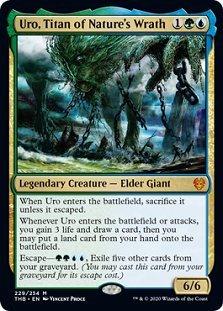 With that out of the way, why might this version of Jund be preferred over the older one? Part of it is certainly the Allure of Shiny New Things. Every time something new comes out, players leap onto the new hottest thing. No matter the decks' power in a vacuum or the overall metagame, players are excited and want to play with the new cards. The first week of legality will always have lots of new decks. Their viability can only be assessed in subsequent weeks and months as players adapt.
With that out of the way, why might this version of Jund be preferred over the older one? Part of it is certainly the Allure of Shiny New Things. Every time something new comes out, players leap onto the new hottest thing. No matter the decks' power in a vacuum or the overall metagame, players are excited and want to play with the new cards. The first week of legality will always have lots of new decks. Their viability can only be assessed in subsequent weeks and months as players adapt.
In that world, Lurrus Jund makes perfect sense. When every deck is falling over itself to have a companion, then decks can get away with being less-than-optimal, because everyone is doing it. Don't you want to be popular? When power level is overall down, it's fine to mess around with cool engines and prioritize card advantage. Going deep on drawing extra cards also makes up for any inefficiency, so the Lurrus/Bauble engine makes some sense.
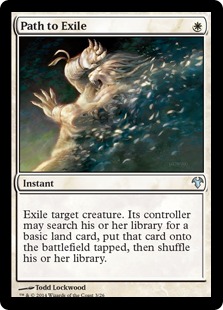 However, this is putting everything on a single point of failure. Without Lurrus in play, the deck is unequivocally worse than normal Jund. Players are aware of this fact, and are playing more Kolaghan's Command to rebuy Lurrus. However, the experience I've had over the past week says that's not enough. Meddling Mage continues to be the most disruptive card in Humans. In offline testing, Path to Exile on Lurrus was devastating. Lurrus can only be cast from outside the game, not exile, and only one Lurrus can be played at all if it's a companion. Thus, there's no redundancy. It is certainly true that right now Lurrus is everywhere, but its ubiquity is creating vulnerabilities that I imagine will be exploited down the line.
However, this is putting everything on a single point of failure. Without Lurrus in play, the deck is unequivocally worse than normal Jund. Players are aware of this fact, and are playing more Kolaghan's Command to rebuy Lurrus. However, the experience I've had over the past week says that's not enough. Meddling Mage continues to be the most disruptive card in Humans. In offline testing, Path to Exile on Lurrus was devastating. Lurrus can only be cast from outside the game, not exile, and only one Lurrus can be played at all if it's a companion. Thus, there's no redundancy. It is certainly true that right now Lurrus is everywhere, but its ubiquity is creating vulnerabilities that I imagine will be exploited down the line.
What Might be Done
 I want to make clear that I don't know if companion is a problem or not. I haven't seen convincing evidence that it is, but I cannot prove that it isn't. That will have to wait on a reasonable data set, which should come together in the next week or two (assuming Wizards actually posts its results).
I want to make clear that I don't know if companion is a problem or not. I haven't seen convincing evidence that it is, but I cannot prove that it isn't. That will have to wait on a reasonable data set, which should come together in the next week or two (assuming Wizards actually posts its results).
That said, if there is a problem, then I'd rather see this fixed via rules changes than bannings. I've seen nothing to indicate, and I haven't seen anyone argue, that the companions are broken cards. If a 3/2 lifelinker with value recursion for three mana was playable in Modern, then Renegade Rallier would see play. Rather, the problem is being a pre-tutored eighth card in the opening hand. Therefore, I'd rather see Wizards issue errata to fix the problem. Whether that's errata on how companion works or a ruling that companion can't be played in constructed, I don't know, but that would fix the actual problem, and players could still play with their cards in a fair manner. However, again, we need to wait and see if there is a problem at all.




Sadly, I don’t think an errata to the rules (such as what Jim Davis suggested recently—which was a great idea btw) is feasible, as the code-writing changes for online play would have to put a halt to both arena and mtgo play. Logistically speaking, we just can’t do that; particularly since that’s the primary medium players are engaged with for the foreseeable future.
The problem is the conception behind the mechanic itself. It’s a fun idea, but in practice it’s just too gimmicky. And while Commander is a spectacular format, taking elements from it and bringing them to constructed play makes some pretty wild assumptions. Specifically that everyone likes Commander and wants to port that experience to constructed games. And the gross assumption is that eternal players were going to be fine with what is, in effect, a permanent change to the game akin to when they introduced planeswalkers. And, if I recall that didn’t go too well, at least initially. A lot of people still don’t think they’re good for the game.
I’m not a fan of much of what Ikoria brought to the table, but some people seem to be loving it. I, and many others, have made no secret how I felt about WAR or either of the new Ravnica sets, M20, or Eldraine. The last set they got “right” in my book was Dominaria, which also had its share of development issues. And before that, Return to Innistrad. I think Wizards F.I.R.E. design principle is fine in theory, but in practice they seem to have confused “power” with “fun” and that’s an issue. I certainly don’t envy the folks at Wizards R&D though. I don’t know where I saw the quote, but I believe I heard someone say something akin to, “a set that has 290/295 perfectly designed by cards isn’t a successful set. It’s a collosal failure.” And that is the pressure these folks are under. I imagine they must feel like they’re walking an eggshell-covered tightrope pretty often. That said, I’d love a job creating and developing cards.
Btw
The link to the Davis video is here: https://youtu.be/cxPKQ2oJ2BY
I generally agree with Jim on this one and that’s along the lines of what I was thinking. I also think that you’re right and it isn’t actually feasible. Worth noting on all this, Rosewater specifically said that the success of commander made them open to try companion. He’d floated the idea years ago and it was rejected as unfun. I think they’re learning that Commander’s appeal is more niche than the numbers of players indicate.
The introduction of planeswalkers is an imperfect example in all of this. The reaction I remember was more of a BWUH? than rage. And for years they were so low power that players had time to adjust. As I remember, the only one that saw lots of play was Garruk Wildspeaker because his ability suite was the most grokable for players at the time. And arguably the only really powerful one. The problem with recent developments has been them being equally unsure about their new ideas and but aiming too high.